Last-Minute NYC Holiday Gift Guide 🎁
We’ve created a holiday gift guide with presents for the intrepid New Yorker that should arrive just in time—


New York City is full of enticing locations, but with all the action and innovation, some of its most enchanting spots are often overlooked: its cemeteries. The city is home to over 50 cemeteries spread out across its 5 boroughs, several of which have become national landmarks. Not only do these graveyards keep the remains of some of the most celebrated figures in history, they are frequently home to remarkable pieces of architecture and sculptures, and serve as backdrops for various films and televisions shows.
We previously highlighted a few of New York City’s smallest cemeteries. Now, here are 12 of the largest by number of interments (the largest at over 3 million), along with the histories that make them so intriguing.
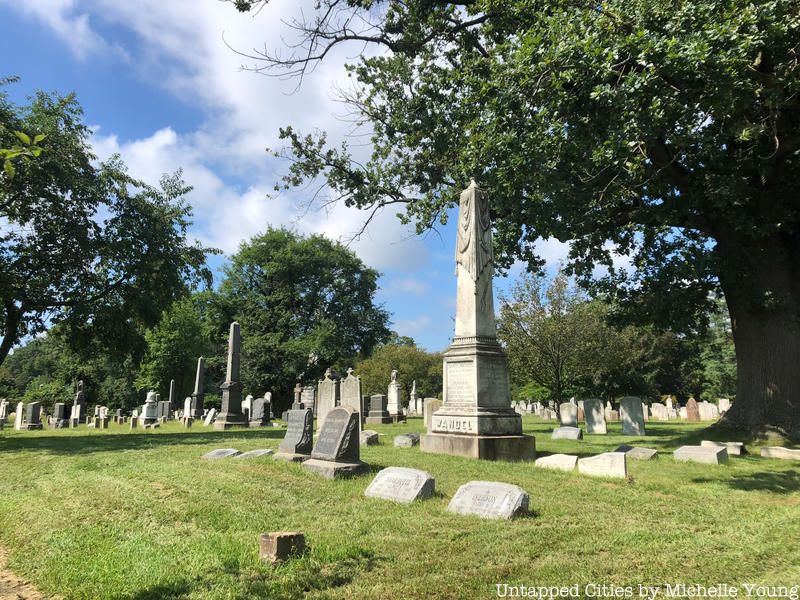
Moravian Cemetery sits on 114 acres of land and has over 70,000 interments. Among the most notable of its inhabitants are several members of the Vanderbilt Family, including the patriarch of the family and railroad mogul, Cornelius Vanderbilt, and his son William Henry Vanderbilt. The Vanderbilt mausoleum, which was designed to replicate a Romanesque church in Arles, France, is surrounded by landscaped grounds designed by Central Park creator, Frederick Law Olmsted.
Although the Vanderbilt grounds are not open to the public, there are still other historical spots accessible to all; since Moravian was established in 1740, some of its buried are amongst the oldest in New York City and the grounds boast trees that also exceed 250 years.
In addition, four walking tours are also available to the public, including the “Old Section Tour” — which will take visitors around the grave sights of the early Dutch and English settlers of Staten Island — and the “Atlantic Avenue Tour,” featuring the cemetery’s Victorian section, where people, such as the creator of New York’s botanical gardens, Dr. Nathaniel Lord Britton, reside.
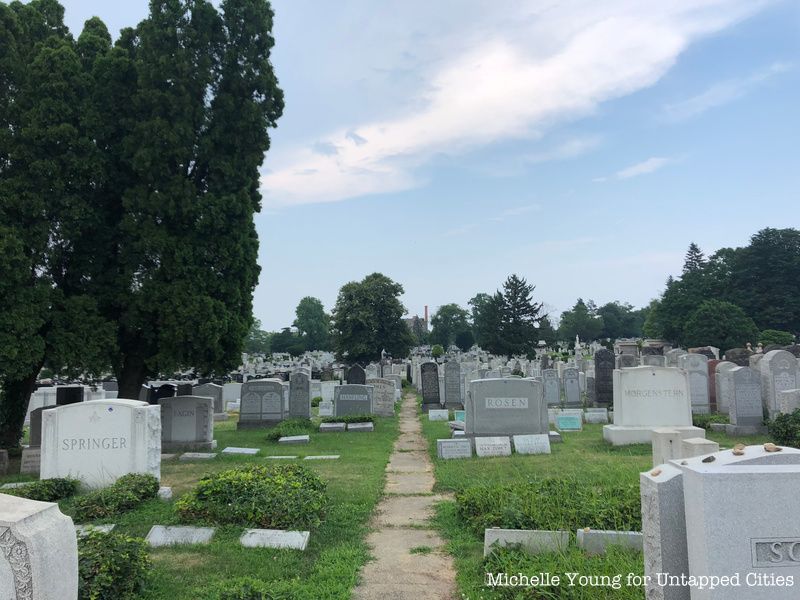
Bordering Queens and Brooklyn along the Jackie Robinson Parkway, Mount Carmel Cemetery was founded in 1906 — the first in a boom of Jewish cemeteries that would later be established in New York City. This came as a direct result of the high volume of Eastern European immigration that was taking place in the early 20th century.
Mount Carmel is the final resting place to some of the most influential people in Jewish and Yiddish history despite having only 85,000 interments, which are spread across Mount Carmel’s 100 acres (a relatively low interment-to-acreage ratio). According to Mount Carmel’s official website, the burial of Sholem Aleichem, the Russian-born writer is “without a doubt, the cemetery’s most famous resident.” At the time of his death in 1916, his funeral was the largest New York City had ever seen.
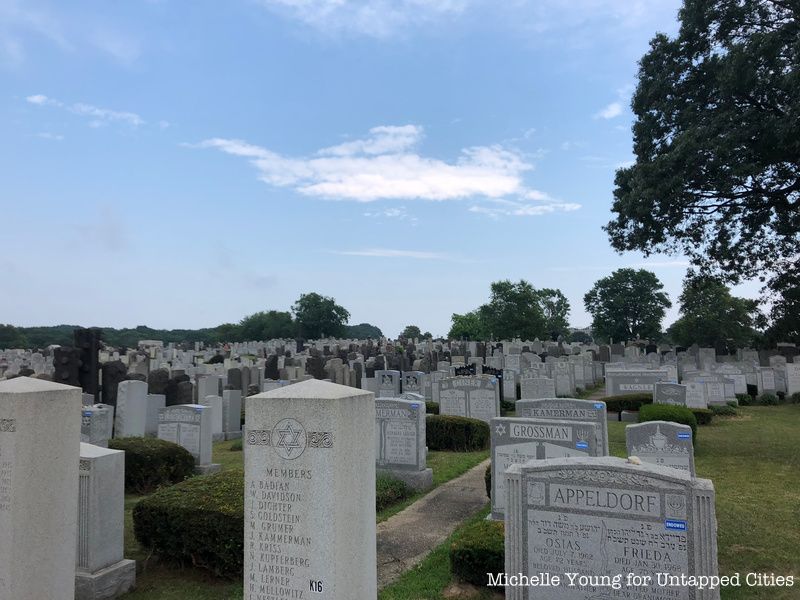
Mount Lebanon Cemetery was established in 1914 and is still being run by one of its founding families. The 85 acres that make up the cemetery were originally bought from Cypress Hills Cemetery, and now over 240 different families reside among the grounds.
Today, visitors to Mount Lebanon can still check out and utilize its mausoleum, The Sanctuary, free-of-charge. According to Mount Lebanon’s website, The Sanctuary was constructed in 1992, becoming the first indoor, public mausoleum in all of New York City.
In addition, the cemetery is home to a monument dedicated to a woman named Celia Sanders and five of her children (ages 4-15) who all died in tenement building fire in 1932. Their funeral was attended by over 3,000 people, who came to mourn with the only two Sanders family members to survive the Lower East Side fire: the father, Abraham Sanders, and one daughter.
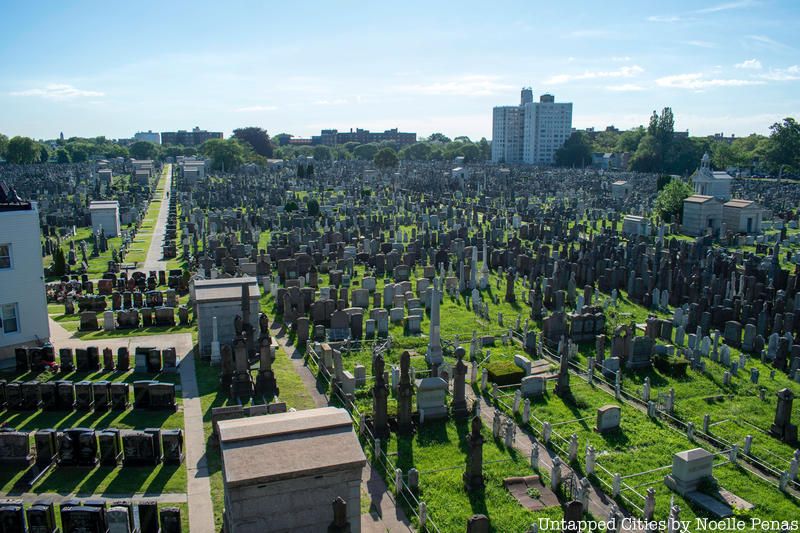
Washington Cemetery in Mapleton, Brooklyn (another Jewish Cemetery) is home to more than 200,000 residents on its collective acreage, which was made possible by the Rural Cemetery Act of 1847. The act, which allowed for commercial cemeteries to be created outside of New York City limits, was put into effect before Brooklyn was a part of New York City. Taken altogether, the Washington Cemetery is one of New York City’s largest cemeteries by interment, although it’s technically split into five different divisions.
Washington Cemetery #1, the original Washington Cemetery, was established by the almost vice-president James Arlington Bennet. Bennet was Mormonism’s founder Joseph Smith’s first choice as running mate in the 1844 Presidential election before Smith was assassinated that same year. Now, Bennet and his family reside in Washington Cemetery #1, but his name is misspelled. His tombstone reads: “Author of Bennett’s Book Keeping & Other Works. Founder of Washington Cemetery.”
In 2008, Washington Cemetery sold its final plot for $7,000, thus making it the first of New York City’s cemeteries to run out of space. Since then, Washington Cemetery has served as an example of New York City’s problem with overcrowded cemeteries (a city where the dead is said to outnumber the number of living).

Mount Zion Cemetery in Queens has somehow squeezed 210,000 burials onto its 78 acres of land. Another largely Jewish cemetery, Mount Zion was established in the wake of the great influx of immigration in the early 1900’s.
One of the most notable architectural features of the Mount Zion is a monument to those who died in the Triangle Shirtwaist Factory Fire of 1911. The fire, which is still, to this day, one of the deadliest industrial accidents in the history of New York City, took the lives of 147 garment workers in a factory in Chelsea. According to Mount Zion’s official site, this disaster would become a major driving force in the push for legislative action to improve workers’ conditions during the Industrial Revolution.

Mount Hebron Cemetery, a Jewish burial ground located in Flushing, Queens, has over 12,000 separate Jewish burial societies. It was established on the land that used to be home to the Spring Hill estate. Only one tombstone remains on this Willet family plot (lady of the house, Elizabeth Willet), serving as the only remaining evidence of the estates’ existence.
Mount Hebron quickly became the cemetery for the Jewish community after 80 percent of its land was sold to Jewish immigrants that had inhabited Queens during the beginning of the 20th century. Today, a couple of special sections can still be found in the cemetery including block 67, which is specifically for New York members of the Yiddish Theatre industry. Another section is made up of a large burial society for the “Workman’s Circle”— established in the early 1930’s to promote Jewish and Yiddish equality and justice. The Workman’s Circle still exists today, though it slowed down significantly in the 1960’s with the commencement of President Franklin Delano Roosevelt’s New Deal.
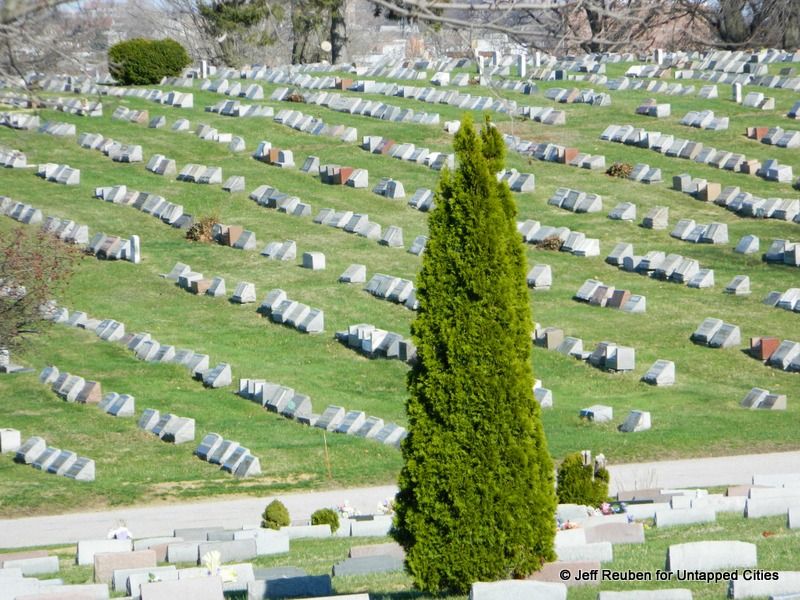
Woodlawn Cemetery, which became a national landmark in 2011, was established in 1863. Spanning over 400-acres, Woodlawn is the final resting place for many famous people including, Moby Dick author, Herman Melville and musicians like Miles Davis and Duke Ellington.
Woodlawn Cemetery’s official website also puts an emphasis on the notable women who are buried on the property, including pioneers who dedicated themselves to the women’s suffrage movement like Elizabeth Cady Stanton. Following in Stanton’s footsteps, the founder of the National League of Women Voters, Carrie Chapman Catt, and Catt’s chief assistant, Mary Garrett Hay, also rest at Woodlawn.
Other famous features at Woodlawn Cemetery include its architectural wonders. There are over 1,300 mausoleums, many of which have been designed for Manhattan’s Victorian elite by prominent American architects such as McKim Mead & White, Cass Gilbert and Carrère and Hastings. One such mausoleum to take note of is the Belmont Mausoleum, which is the resting place of yet another prominent women: Ava Vanderbilt.
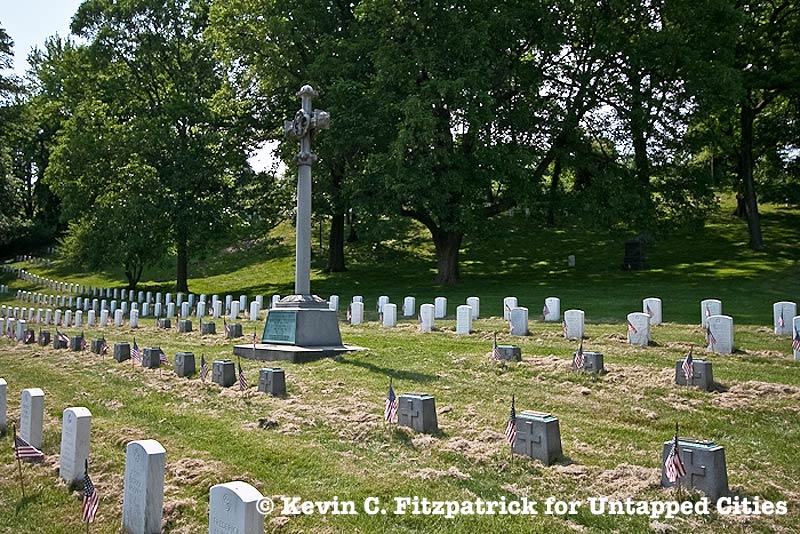
Cypress Hills Cemetery is divided by the Jackie Robinson Parkway, and is therefore located in both Brooklyn and Queens. Among its 225 acres rests 400,000 people, including musicians, actors, athletes and inventors, such as the road-way’s namesake himself, baseball hall-of-famer and first African American Professional Major League baseball player, Jackie Robinson. Also among the buried are Dr. Thomas Holmes, who is credited as the father of American embalming, and the last surviving veteran of the War of 1812, Hiram Cronk. In fact, Cypress Hills is home to many who have fought in wars: part of the cemetery was especially dedicated to soldiers from the Civil War, 235 of which were confederate prisoners of war, who died on Hart Island.
Above ground, Cypress Hills is also home to two Abbeys: Cypress Hills Abbey (1931) and Memorial Abbey (1936). According to the Cypress Hills website, both abbeys still have many of their original features, including the windows, stained glass and chapel.

With 526,000 interments, Cemetery of the Evergreens is New York City’s fourth largest cemetery. This Brooklyn burial ground stretches over 225 acres and has become the permanent resting place for many historical icons such as tap dancer, Bill “Bojangles” Robinson, and jazz musician Lester Young.
However, some of its most interesting tenants were unknown for 100 years. In 2011, six bodies that were unrecognizable after the damage of the Triangle Shirtwaist Factory Fire were finally identified. To commemorate these victims, a statue of a kneeling woman was erected and today, it continueds to be one of the Evergreens’ most noteworthy features.

Sitting on 225 acres of land, All Faith’s Cemetery in Queens is roughly 1/4 the size of Central Park, according to the cemetery’s official website. Established over 157 years ago, All Faith’s has 540,000 permanent residents, but it is also a key tourist location for the living as well; with some of the highest vantage points in Queens, All Faith’s boasts some of the best views of Manhattan. Moreover, with over 200,000 pieces of historic architecture, it has also served as the backdrop for movies and shows such as Rosemary’s Baby and the Sopranos.
The founder of the cemetery, Rev. W. Geissenhainer, would go down in history for much more than just establishing this historical landmark. Geissenhainer invented the process of iron smelting; without such technology, there would have been no Industrial Revolution.

Within the 478 acres of land that make up Green-Wood Cemetery, more than 560,000 permanently inhabit the grounds, including notable people, such as composer Leonard Bernstein, Boss Tweed, Charles Ebbets and fine-artist Jean-Michel Basquiat, among others. These stars — along with the cemetery’s gorgeous landscape that made it the second most visited tourist attraction in the United States in the 1860’s (next only to Niagara falls) — has earned Green-Wood the reputation of being one of the most prestigious places to be buried.
Established in 1838, Green-Wood is also one of the first rural cemeteries in America. Along with this early foundation comes a rich history: so beautiful were the grounds of the cemetery that they actually inspired the founding of Prospect Park, and sparked the competition that resulted in the creation of Central Park by Frederick Law Olmsted.
Today, there are still many reasons to visit Green-Wood with a special highlight being a once-a-year tour of the accidental catacombs below the cemetery. Other permanent attractions include the above-ground architecture such as the wide array of mausoleums, as well as a statue of the Goddess Athena entitled Altar to Liberty. The statue, which sits at the highest point in the cemetery (Battle Hill), was commissioned to commemorate the Revolutionary War battle, The Battle of Brooklyn, that took place on Green-Wood’s grounds.
However, perhaps the most spectacular architectural site is Green-Wood Chapel. The chapel, done in the style of the Gothic Revival from 1912, was designed by the famous architectural firm Warren and Wetmore, which was also responsible for Grand Central Terminal and Chelsea Piers.
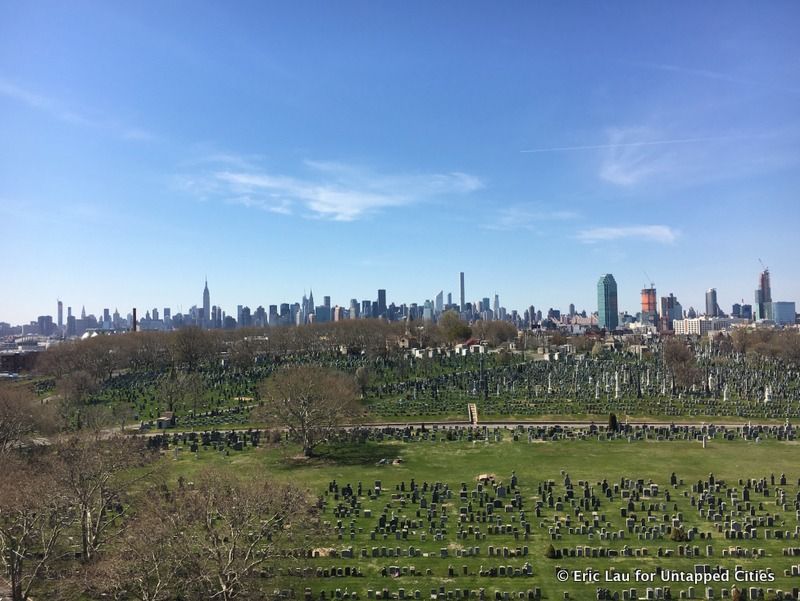
Although the First Calvary Cemetery has only 42 graves (technically making it one of the smallest cemeteries in New York City), the other three divisions that make up its entirety hold roughly 3 million interments; this makes Queens home to more dead than living. Spanning over 365 acres, the cemetery is not just the largest cemetery in the New York, but the largest cemetery in the United States.
According to Calvary Cemetery’s official website, its founding in 1848 also marked the first time a New York City cemetery had been established outside of Manhattan Island — a necessary move due to overcrowding and several serious outbreaks of disease that spread as a result. In 1952, deaths in New York City from typhus and cholera became so numerous that the City Council passed a law preventing people who perished from such diseases to be buried on the island. As a result, Calvary became the first of many cemeteries to make up the “cemetery belt” — the strip of cemeteries along Jackie Robinson Parkway that’s large enough to be seen from space.
In more recent times, Calvary also has become the site of something a little more lively — the backdrop for numerous movies and television series. The list includes the Godfather, Zoolander, Gotham, The Night Of, Jessica Jones, and Daredevil, just to name a few.
To read more about New York City’s cemeteries, check out The Top 10 Secrets of NYC’s Calvary Cemetery in Queens, the Largest in the US and Ava Vanderbilt’s Final Resting Place in Woodlawn Cemetery. Get in touch with the author: @Erika_A_Stark
Subscribe to our newsletter